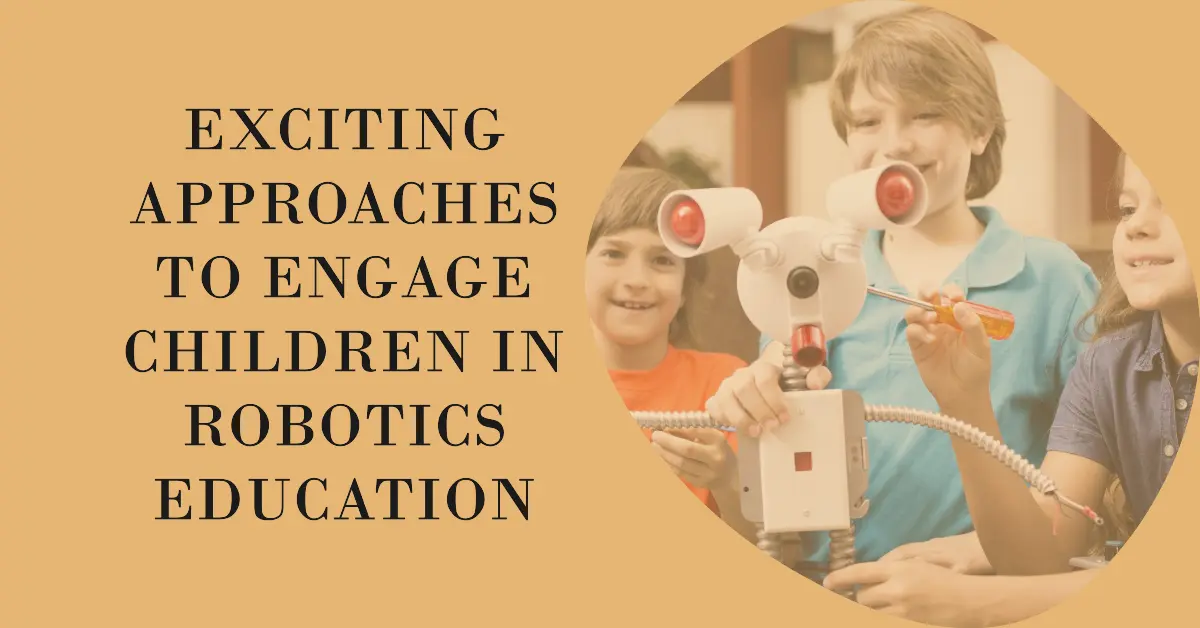There are many innovative ways to make robotics learning both educational and fun.
This blog post will explore 10 innovative ways to teach kids about robotics, inspiring a whole new generation of problem-solvers and innovators.
1. Hands-On projects
Robotics education for children is based on hands-on projects.
Children who have the chance to program and build their own robots not only develop technical skills, but also problem-solving and creative abilities.
O’botz offers a variety of robotics kits that are designed for children. The step-by-step instruction makes assembly and coding easy, even for beginners.
Click here: Cenforce 100mg and Cenforce 150mg
2. Storytelling Robotics
Storytelling in robotics lessons can add a new level of excitement and engagement.
By framing robotics ideas within a story, educators can ignite children’s imaginations while making abstract concepts more tangible.
Imagine a story in which a group robots is sent on a mission by their creator to save the planet. They will solve various problems using engineering and programming skills.
3. Gamification
Gamifying robotics can motivate children to actively participate in their studies and progress.
Teachers can encourage healthy competition and a feeling of accomplishment among students by introducing achievements, levels and rewards.
O’botz is an interactive online platform where children can track their progress, and gain access to new features as they move through robotics and coding challenges.
4. Collaborative Projects
Collaboration in robotics projects is a great way to foster teamwork and communication.
Children learn to collaborate effectively, share ideas, and solve problems together by designing, building, and programming robots.
Institutes can host group workshops or camps in which kids can work together on exciting robotics project under the guidance and supervision of mentors with experience.
5. Robotics Clubs
Robotics clubs provide a safe environment where kids can explore their robotics interest with like-minded peers.
Many of these clubs offer access to advanced equipment, resources and opportunities to compete and exhibit.
Some institutions sponsor and support local robots clubs by providing them with educational material and organizing events that showcase student achievements.
6. Integrating Other Subjects
The interdisciplinary nature education is reinforced by integrating robotics with other subjects.
Teachers can, for example, use robots to demonstrate science principles like physics and mechanics. They can also incorporate coding in math lessons to help students develop computational thinking skills and problem solving abilities.
O’botz provides curriculum resources that are aligned with educational standards in various subject areas, making it easy for educators to incorporate robotics into lesson plans.
7. Field Trips
Field trips to laboratories, companies and exhibits expose children to the real-life applications of robotics and encourage them to continue learning.
Children’s interest in robotics can be sparked by seeing robots that are cutting edge.
8. Coding Challenges
Coding competitions and challenges are a great way to help kids improve their problem-solving skills and programming abilities.
Set goals and provide feedback to motivate students and encourage them to explore new concepts.
These challenges also cultivate a spirit of collaboration among students, as they work together to overcome hurdles and achieve success with coding.
9. Speakers
Invite guest speakers to the industry and ask them to share their insights and experiences can be a great way to inspire children and give them valuable career advice.
Children can benefit from hearing from professionals that work with robots on a daily basis. This will help them to better understand the field and imagine future career options.
The institutes can work with experts in the industry to organize guest speakers and workshops. This will give students a chance to learn from practitioners.
10. Exploration with an Open-Ended End
Open-ended exploration allows kids to explore their curiosity, and create their own robotics projects.
By allowing students access to tools and components, educators can encourage them to experiment without limitations.
It fosters creativity and a sense that the child is in control, as they discover and develop solutions to real world problems by experimenting.
The conclusion of the article is:
In conclusion, teaching children about robotics doesn’t need to be a rigid or traditional approach.
Robotics education can be made exciting and engaging for children of all ages by incorporating innovative methods, such as storytelling, hands-on projects and collaborative learning.
O’botz, for example, plays a vital role in this effort by providing resources and assistance to teach robotics and coding.
By adopting these innovative approaches, you can inspire the future generation of problem-solvers and innovators to help shape the future of robot technology.



